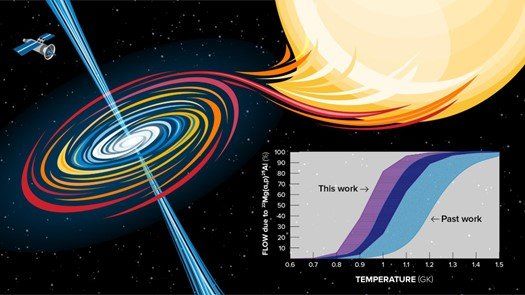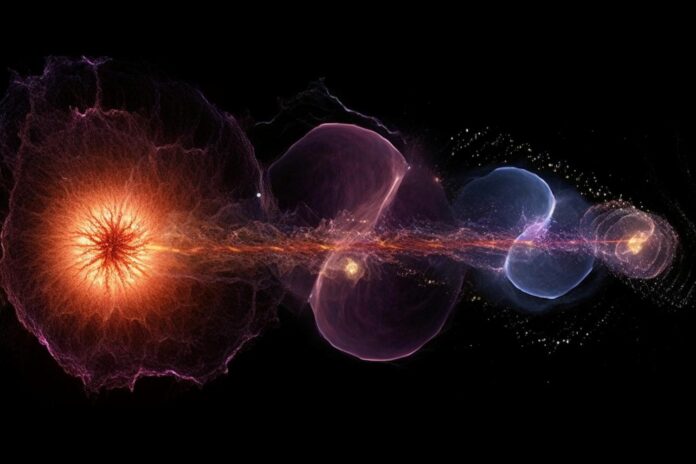During the explosion, an X-ray burst occurs on the neutron star’s surface as it absorbs material from its surroundings. This absorption increases temperatures and densities on the neutron star’s surface, igniting a cascade of thermonuclear reactions.
These processes produce atoms of heavy chemical elements. A new study presents an analysis of one of these reactions, 22Mg(α,p)25Al (magnesium-22 and helium-4, generating a proton and aluminum-25). The rate of this reaction greatly influences models of XRBs and the reaction mechanisms driving these explosions. Scientists discovered that the reaction rate is four times higher than the preceding direct measurement.
A series of events involving unstable nuclei that swiftly seize protons before the nuclei have an opportunity to decay are what power XRBs. The nuclear flow slows down during this sequence due to specific “waiting point” nuclei (like magnesium-22) experiencing a drop in the rate of particular proton capture processes.
Studies have shown that these nuclei could avoid these waiting spots and continue creating heavier elements by absorbing alpha particles (helium-4) rather than protons. Scientists can better understand XRBs by precisely calculating the rates of potential reactions at the waiting points, such as the 22Mg(α,p)25Al reaction at the magnesium-22 waiting point.
Using the ATLAS in-flight system, scientists created a radioactive beam for use in flight. To replicate circumstances crucial for XRBs, the beam was directed toward the MUlti-Sampling Ionization Chamber (MUSIC) detector, filled with pure helium gas. The 22Mg(α,p)25Al reaction’s angle and energy-integrated cross-section were measured directly for the first time thanks to the experiment. A measurement of the likelihood that the response will occur is the cross-section.

The 22Mg(α,p)25Al reaction’s angle and energy-integrated cross-section were measured directly for the first time thanks to the experiment. A measurement of the likelihood that the response will occur is the cross-section. According to the experiment, this likelihood is four times higher than the prior direct measurement. This increased rate suggests a greater chance that the 22Mg(α,p)25Al reaction will avoid the 22Mg waiting point. The scientists also discovered that, contrary to earlier theories, the reaction starts at lower temperatures.
The new study provides insight into the underlying physics of the nucleosynthesis reaction flow through the 22Mg waiting point in XRBs.
Journal Reference:
- H. Jayatissa et al., Study of the Mg22 Waiting Point Relevant for X-Ray Burst Nucleosynthesis via the Mg22(α,p)Al25 Reaction, Physical Review Letters (2023). DOI: 10.1103/PhysRevLett.131.112701
